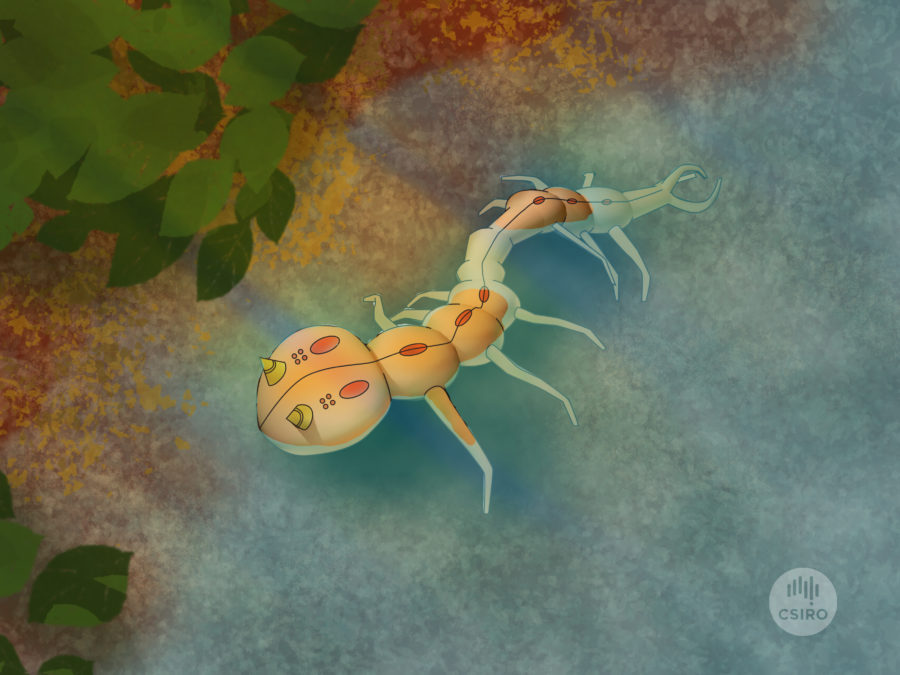“Evolution is cleverer than you are,” or so states Orgel’s second rule, a rule attributed to the British chemist Leslie Orgel. Now researchers at Australia’s national science agency, CSIRO, in conjunction with researchers from Vrije University in the Netherlands, the University of Lorraine in France, and Australia’s La Trobe and Monash Universities, have produced a paper predicting the shape of robots of the future. It says that they could be taking their engineering cues from nature.
It is hard to fault the logic, scientists can do little more than marvel at how evolution has created incredibly complex and sophisticated solutions to just about every problem in the natural world.
As Dr David Howard, lead author of the paper said: “Evolution doesn’t care what something looks like. It searches a much wider design space and comes up with effective solutions that wouldn’t be immediately obvious to a human designer.
Human and robots working in unison by 2020 – study
“An animal like a manta ray or a kangaroo may look unusual to human eyes, but is perfectly calibrated for its environment.” The paper, entitled Evolving embodied intelligence from materials to machines, suggests that the current crop of robots are not sufficiently specialised and that they struggle in unstructured, complex environments. It says that the future of robots may lie with what it calls Multi-Level Evolution.
It is not proposing that this approach will be applied just yet, though. It says that the key to creating these robots of the future in this way is the ability for new technologies to allow robots to be “designed from the molecular level up to perform their mission in extremely challenging circumstances.” But the catalyst for this approach will be technologies such as “high-throughput materials discovery and characterisation, advanced manufacturing and artificial intelligence” which it expects to be up to this bold task in around 20 years.
Regulating robots – keeping an eye on AI
There is a key point here, which the paper eluded too. Robots of the future won’t be designed by humans, maybe if we are lucky, humans will play a role, but the detailed work will be carried out by artificial intelligence, machine learning, as neural networks are applied to the greatest database of the lot: the database that is nature: and its 8.7 million species, and the countless ways each species solves nature’s problems.
CSIRO said that “algorithms based on natural evolution would automatically design robots by combining a variety of materials, components, sensors and behaviours. Advanced, computer based modelling could then rapidly test prototypes in simulated, ‘real world’ scenarios to decide which works best.”
It says that the end result would be “simple, small, highly integrated, highly specialised, and highly cost-effective robots, precision engineered for their task, environment, and terrain; and that adapt on their own and automatically improve their performance.”
It gave as an example “a robot designed for basic environmental monitoring in extreme environments. It would need to traverse difficult terrain, gather data, and eventually fully degrade so as to not pollute the environment.”
The paper speculated on how a robot designed for the Sahara desert would differ from one in the Amazon rain forest. The former would be designed to operate in punishing heat, dust and sand, the latter would be optimised for traversing trees, climbing over the rain forest’s foliage.

Science fiction has been bombarding us for years with warnings about machines taking over — ‘Terminators coming back from the future’. Maybe it is nature, the natural world that has got more to worry about concerning disruptive technology, with robots replacing nature’s creations.
Or maybe robots can support the natural world, undoing the damage caused by humans, stopping the next extinction event in its tracks, nullifying the Holocene or Anthropocene extinction.
Maybe, for example, we can tackle the environmental threat posed by the declining bee population, with robot bees, pollinating plants, undoing the damage caused by humans.
Or maybe CRISPR/cas9 gene editing technology could be applied to modify evolution’s work to turn nature into our servants. DNA edited insects and AI designed robots working together.
It may, however, be worth remembering Orgell’s first Law: “Whenever a spontaneous process is too slow or too inefficient a protein will evolve to speed it up or make it more efficient.”
Can Multi-Level Evolution crafting the robots of the future be cleverer than natural evolution?







